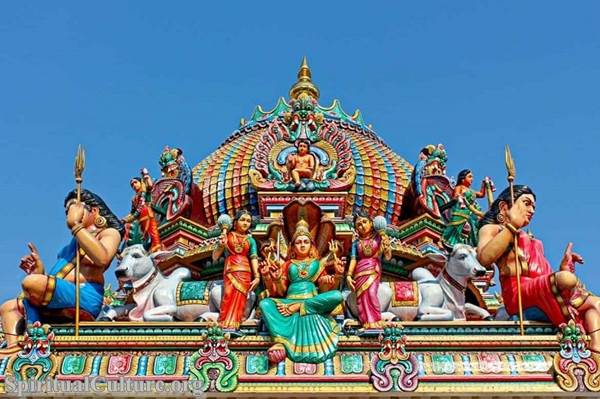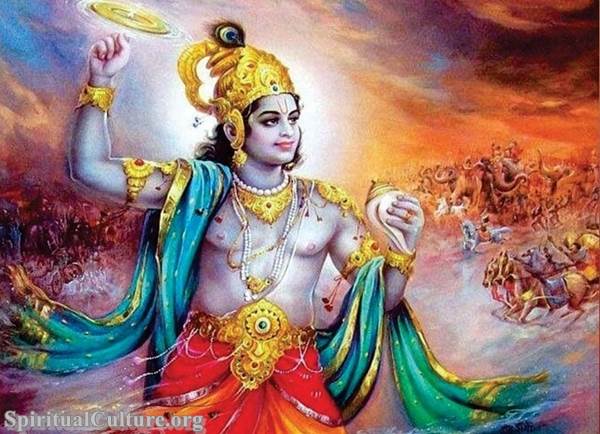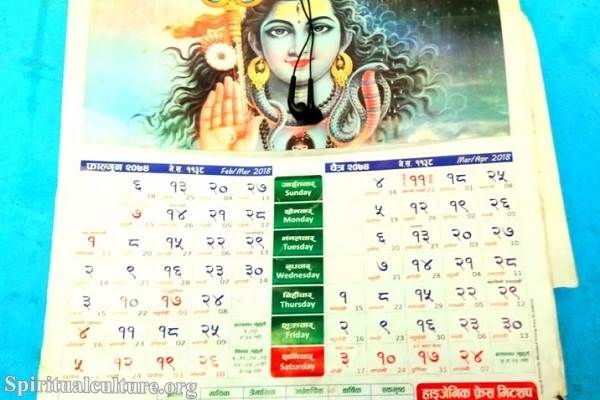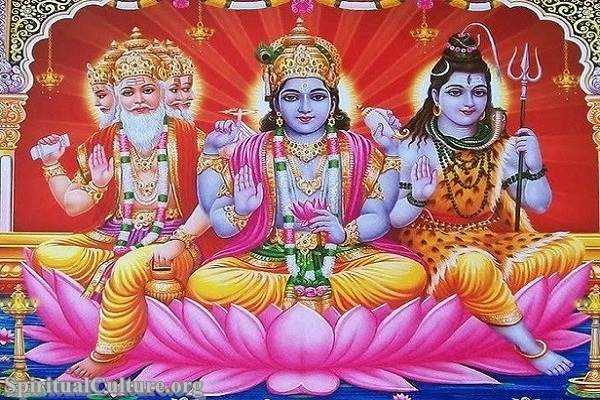Time, in the Hindu worldview, is not a straight line with a clear beginning and end. It is a grand cycle — a cosmic rhythm that moves through vast ages, each echoing creation, preservation, and dissolution. As “Spiritual Culture,” we invite you to explore this rich understanding of time, one that stretches beyond clocks and calendars and speaks instead to the soul of existence.
This article will guide you through the concept of Yugas — the great epochs in Hindu cosmology. We will uncover how these vast ages reflect the moral and spiritual decline (and hope for renewal) of humanity, why they matter in our inner life today, and how they call us to remember the eternal beyond the ephemeral.
The Cyclical Nature of Time in Hinduism
Linear vs. Cyclical Time: Two Ways of Seeing Reality
In many Western traditions, time is perceived linearly — from a singular point of creation toward an ultimate conclusion. But Hinduism views time through a cyclical lens, like the turning of a wheel. This cycle repeats endlessly, encompassing birth, life, decay, and rebirth — both in the cosmos and the individual soul.
The Sanskrit term for time is “Kāla”, which also means death — a reminder that time consumes all. But in consuming, it also renews.
Time as a Sacred Rhythm, Not a Countdown
Time, in Hinduism, is not just a measure — it is a divine rhythm. The Trimurti — Brahma (creator), Vishnu (preserver), and Shiva (destroyer) — govern this rhythm. Their cosmic roles echo through every moment of existence, from the falling of a leaf to the lifespan of a universe.
This understanding brings depth and grace to existence. Every moment matters — not because it is unique in a linear chain, but because it participates in a sacred flow.
The Four Yugas: Ages of the World
At the heart of Hindu cosmology are the four Yugas, or world ages. Each Yuga represents a phase in the spiritual evolution and decline of humanity. Together, they form a Maha Yuga, or “Great Age,” totaling 4.32 million years.
1. Satya Yuga (Krita Yuga): The Age of Truth
- Duration: 1.728 million years
- Key Quality: Dharma (righteousness) is fully present — 100%
- Symbol: The bull of Dharma stands firm on all four legs
In the Satya Yuga, humanity lives in perfect harmony with divine law. There is truth, peace, compassion, and a deep connection to the sacred. People live long, healthy lives with minimal suffering. Meditation and inner realization are the norm.
This is the Golden Age, where the world is bathed in divine light, and virtue reigns supreme.
“In the Satya age, Dharma stands on all four legs and prevails throughout the world.”
— Vishnu Purana 3.11
2. Treta Yuga: The Beginning of Decline
- Duration: 1.296 million years
- Dharma: 75%
- Symbol: The bull of Dharma stands on three legs
In this Silver Age, righteousness begins to decline. Virtue still predominates, but ego and desire emerge. Great spiritual figures arise, such as Rama, to guide humanity. Rituals and sacrifices (Yajnas) become central to spiritual life, marking a shift from pure meditation to external expressions of faith.
3. Dvapara Yuga: Struggle and Duality
- Duration: 864,000 years
- Dharma: 50%
- Symbol: The bull stands on two legs
This is the Bronze Age — a time of duality, confusion, and spiritual struggle. Righteousness and unrighteousness are equally matched. Suffering increases. Disease, wars, and divisions appear. The Vedas are divided into four parts for easier understanding, indicating a decline in human capacity.
It is the age of Krishna, whose teachings in the Bhagavad Gita become a guiding light through the growing darkness.
4. Kali Yuga: The Age of Darkness
- Duration: 432,000 years
- Dharma: 25%
- Symbol: The bull stands on one leg
We are said to be in the Kali Yuga now — the Iron Age. This is a time marked by ignorance, materialism, greed, and spiritual forgetfulness. Dharma is at its weakest. Truth is obscured, and ego dominates. Yet even in this age, the potential for awakening remains.
“In Kali Yuga, only one quarter of Dharma remains, which slowly diminishes to zero.”
— Bhagavata Purana 12.3.25
Ironically, it is also said to be the easiest age to attain salvation — not through complex rituals, but through Bhakti (devotion). The Bhagavata Purana extols the chanting of God’s name as the supreme path in this age.
The Maha Yuga and Cosmic Cycles
Each full cycle of the four Yugas is called a Maha Yuga. A thousand Maha Yugas form one day in the life of Brahma, the Creator — which equals 4.32 billion years.
- One day of Brahma (day + night): 8.64 billion years
- 360 Brahma-days: 1 year of Brahma
- Brahma’s lifespan: 100 years = 311 trillion years
These numbers aren’t meant to overwhelm, but to uplift. They show how Hinduism views time not in human minutes, but in cosmic breaths.
What Happens After Kali Yuga?
After the Kali Yuga, it is said that the world will be purified and renewed. A new Satya Yuga will dawn — the wheel will turn again.
Some scriptures speak of a figure named Kalki, the final avatar of Vishnu, who will appear at the end of Kali Yuga to restore righteousness. This isn’t just prophecy — it’s a spiritual metaphor for renewal.
“Kalki will appear riding a white horse, wielding a sword of truth, and usher in the new golden age.”
— Bhagavata Purana 12.2.19–20
Spiritual Lessons from the Yugas
1. Time Is a Mirror, Not a Master
The Yugas reflect the inner condition of humanity. We are not prisoners of the age we live in — but participants in shaping its direction. Kali Yuga may be dark, but within it burns the eternal light of the spirit.
2. Truth Endures, Even When Hidden
Though Dharma declines, it never disappears entirely. Even in Kali Yuga, devotion, meditation, and truth are available. The divine never abandons the world — only becomes harder to perceive.
3. Every Age Has Its Path
- In Satya Yuga: Meditation
- In Treta Yuga: Ritual
- In Dvapara Yuga: Worship
- In Kali Yuga: Devotion and remembrance of God’s name
This shows a compassionate view of time — each age has a spiritual way suited to its challenges.
4. Hope Is Woven into the Cosmic Pattern
No Yuga is final. Even darkness has an end. Just as the moon wanes and returns, the soul’s light may dim, but will rise again. This is not blind optimism — it is cosmic law.
Living in Kali Yuga: What Can We Do?
Embrace Simplicity and Sincerity
In this age, the most effective path is heartfelt devotion. Simple prayers, humble living, honest speech — these become profound acts of resistance against the tide of ego.
Honor Sacred Teachings
Texts like the Bhagavad Gita, Upanishads, and Bhagavata Purana shine especially bright in dark times. They are anchors of truth when the world feels unstable.
Chant the Divine Name
“In the age of Kali, intelligent persons perform congregational chanting to worship the incarnation of God…”
— Bhagavata Purana 11.5.32
Chanting names like Rama, Krishna, Shiva, or Om is seen as a powerful spiritual act — accessible to all, regardless of caste or learning.
Reflect and Reimagine
The Yugas are more than ancient chronology — they are a spiritual mirror. They remind us that time flows not just in the heavens, but in the human heart. While we may live in Kali Yuga, surrounded by noise, conflict, and distraction, the call of Satya — of truth — still echoes within us.
As “Spiritual Culture,” we invite you to remember that even in the darkest age, the path to the divine is never closed. The cycle turns, but the soul endures. And within each of us lies the power to bring light, to remember love, and to awaken the eternal.
Let the Yugas not just inform you — let them transform the way you see time, and the timelessness within yourself.





